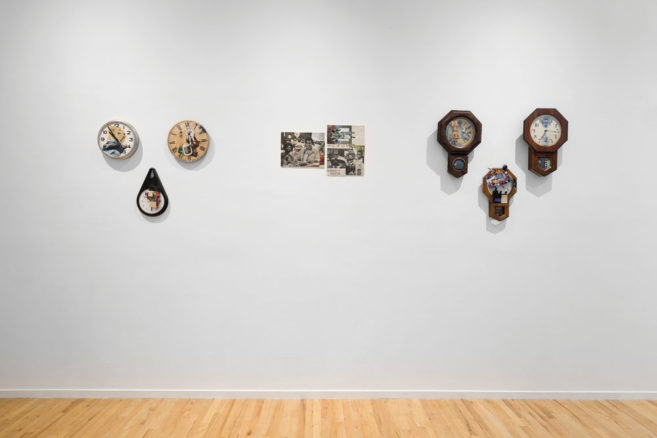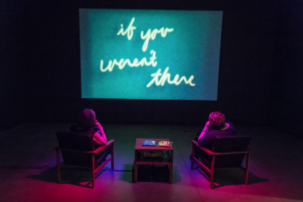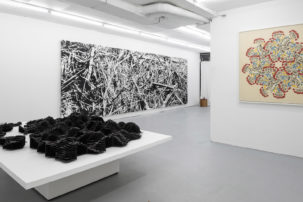Photography, as we have come to know it, is a transactional medium. Some transactions are negotiations, agreements reached for mutual benefit. Others depend on an imbalance of gain and forfeiture. These dynamics of power are bound to the mechanisms of photography: the camera and the image, the subject and the viewer. In her recent exhibition “cuculoris, a time machine for shadows,” Nicole Kelly Westman restructures the photographic principles of light, touch and time, and their relationships to power. She does so through a deft skirting of the camera and the image, and a precise treatment of photography as a relational space.
faux light falling on drawn drapes is a set of silk curtains that frames the exhibition with its warm, soft colouring reminiscent of the amber-caramels and mottled browns of a monarch butterfly. It floats lithely in the entryway, entreating viewers to part this threshold with their hands and enter the space. In doing so the viewer connects through touch with the hands of others, including Calgary textiles artist Jolie Bird, who has hand-embroidered two poems penned by Westman into the silk. To create this work, Westman captured light patterns silhouetted on sunbathed drapes and had these shapes digitally printed on silk. The transfer of light onto a sensitive material is characteristic of photographic reproduction. But such reproduction often begets delay, each version further distanced from its origin. Westman’s use of transferral here demonstrates a manifestation of the index rather than simple reproduction. The light seen in another room is reproduced in a literal sense—via the digital print on silk—but it is also activated in a spatial sense, in bringing that light to this room.
a gesture of trust invites visitors to drink from a cooler of mountain spring water. To do so, one must carefully unwrap an amber-coloured glass tumbler from its white paper sleeve. Each sleeve is stamped with a message in handwritten cursive. I could tell you what it says, but I prefer not to—and in my stubbornness, I perceive how Westman has established a quiet trust between viewer and artist.
This simple setup—a water cooler atop an altar-like handmade wooden frame—is a matrix of indexes. The work indexes the artist’s body, as she hiked Harvie Heights in the Rocky Mountains to personally collect the water served here. The empty vessels gathered at the base evidence the bodies of past visitors who enter the exhibition space, presumably parched by the hot summer sun. Here, this indexical activation depends on consent through reciprocity: if one chooses to partake in this transaction, they enter into relation with the artist.
I was asked recently how legible care is to the viewer of Westman’s work. My response: it’s irrelevant. I don’t believe that care requires gratitude or perception in order for it to function. In fact, it operates much better if it escapes these acknowledgements. For Westman, care is not about paternalism but about integrity, mindfulness, reciprocity—values that have historically been neglected in the transactions of photography. Westman’s exhibition presents inherently photographic work without any photographs, and impressively demonstrates how care can guide new, relational possibilities for the medium.






